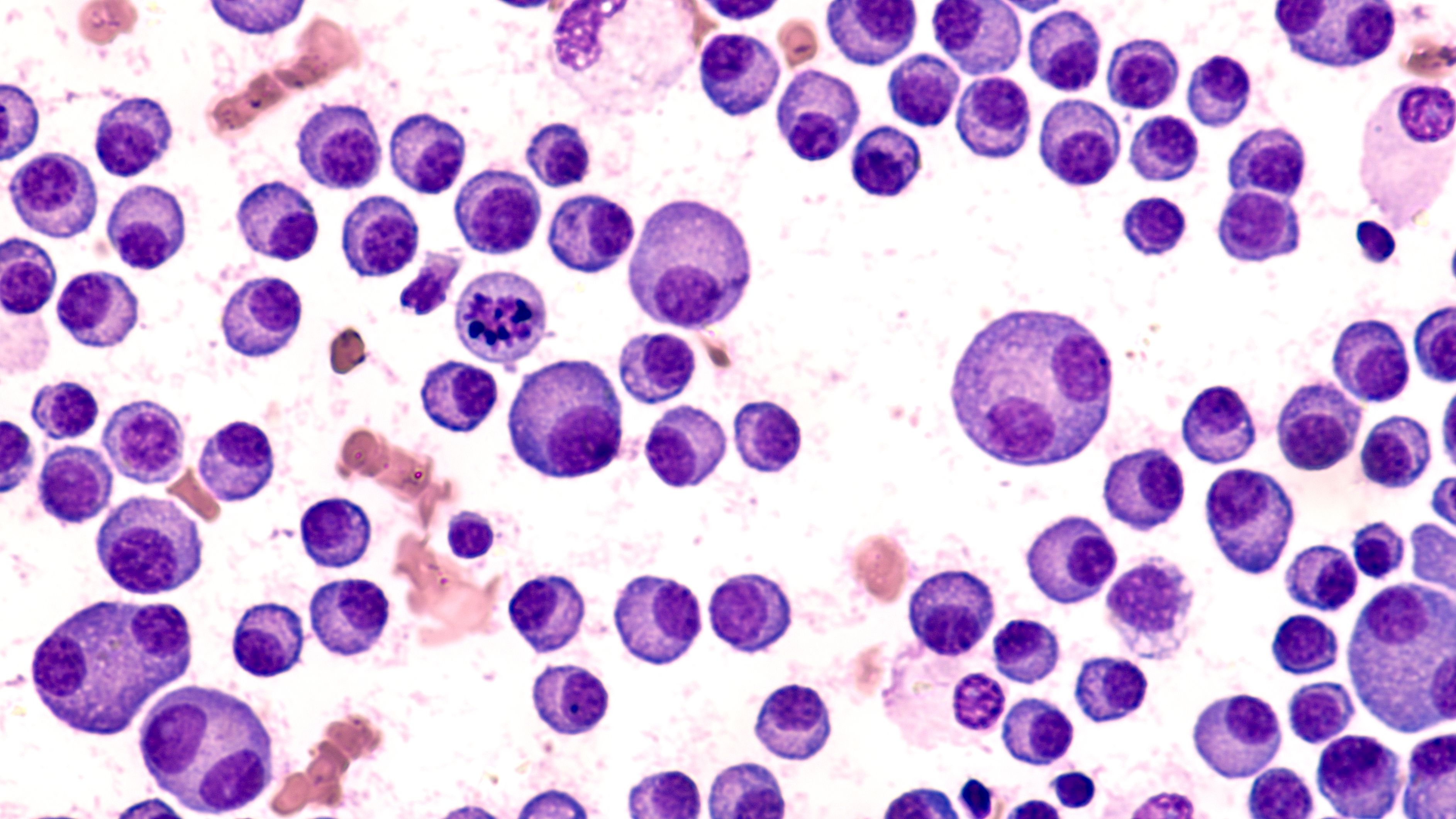Phase III PERSEUS Trial Data Show Darzalex Faspro Combo Improves Survival in Newly Diagnosed Multiple Myeloma
Darzalex Faspro with bortezomib, lenalidomide, and dexamethasone for induction and consolidation therapy and in combination with maintenance lenalidomide found to improve survival in patients with multiple myeloma who are eligible for autologous stem cell transplant.
Image credit: David A Litman | stock.adobe.com

The FDA will evaluate Johnson & Johnson’s supplemental Biologics License Application (sBLA) for Darzalex Faspro (daratumumab and hyaluronidase-fihj) with bortezomib, lenalidomide, and dexamethasone (D-VRd) for induction and consolidation therapy and in combination with lenalidomide (D-R) for the maintenance treatment of adults newly diagnosed with multiple myeloma who are eligible for autologous stem cell transplant (ASCT).1 Darzalex Faspro, a CD38-directed antibody, has previously been approved by the FDA for eight indications in multiple myeloma, with three in the frontline treatment of newly diagnosed patients who are transplant eligible or ineligible.
“We are committed to changing the course of multiple myeloma through building combination regimens such as D-VRd with complementary mechanisms of action. The Darzalex Faspro-based quadruplet therapy demonstrated a clinically significant reduction in the risk of progression or death for transplant-eligible, newly diagnosed patients with multiple myeloma,” Craig Tendler, MD, vice president, Clinical Development, Diagnostics, and Global Medical Affairs, Johnson & Johnson Innovative Medicine, said in a press release. “Patients are most likely to experience their deepest and most durable responses during the first line of treatment with D-VRd. This regimen has the potential to improve long-term outcomes for newly diagnosed patients and we look forward to working with the FDA on the review of this application.”1
The sBLA submission was based on findings from the ongoing, randomized, open-label Phase III PERSEUS (NCT03710603) trial, which compared D-VRd induction and consolidation therapy, ASCT, and D-R maintenance therapy vs. VRd, ASCT, and lenalidomide maintenance treatment.
For the study, which was published in the New England Journal of Medicine (NEJM), investigators randomly assigned 709 transplant-eligible patients with newly diagnosed multiple myeloma to receive either subcutaneous Darzalex Faspro with VRd induction and consolidation therapy and maintenance treatment with lenalidomide (D-VRd cohort) or VRd induction and consolidation therapy and lenalidomide maintenance monotherapy (VRd cohort). The trial’s primary endpoint was progression-free survival (PFS). Key secondary endpoints were a complete response (CR) or better and minimal residual disease (MRD)–negative status.2
Investigators found that at a median follow-up of 47.5 months, patients in the D-VRd cohort had a reduced risk of disease progression or death compared to the VRd cohort. An estimated 84.3% of patients achieved PFS at 48 months in the D-VRd cohort compared with 67.7% in the VRd cohort. Further, 87.9% of patients in the D-VRd cohort achieved a CR or better compared with 70.1% of patients in the VRd cohort.2
An estimated 64% of patients administered D-VRd who entered the maintenance phase were able to discontinue Darzalex Faspro after achieving a CR or better and sustained MRD-negativity after at least two years of D-R maintenance.1 In terms of safety, adverse events reported with D-VRd followed by D-R maintenance were consistent with prior findings with Darzalex Faspro, VRd, and R.1
“The results of the first interim analysis of the PERSEUS trial, with a median follow-up of 47.5 months, showed that the addition of subcutaneous daratumumab to VRd induction and consolidation therapy and to lenalidomide maintenance therapy conferred a significant benefit with respect to progression-free survival among transplantation-eligible patients with newly diagnosed multiple myeloma,” the authors of the NEJM study wrote. “The risk of disease progression or death in the D-VRd group was significantly lower than the risk in the VRd group. The daratumumab-based therapy also conferred a significant benefit with respect to the depth of response, with a higher overall occurrence of a complete response or better and a higher overall occurrence of MRD-negative status in the D-VRd group than in the VRd group.”2
References
1. Johnson & Johnson submits supplemental Biologics License Application to U.S. FDA seeking approval of DARZALEX FASPRO® (daratumumab and hyaluronidase-fihj)-based regimen for the treatment of patients with transplant-eligible, newly diagnosed multiple myeloma. Johnson & Johnson. News release. January 30, 2024. Accessed January 31, 2024. https://www.jnj.com/johnson-johnson-submits-supplemental-biologics-license-application-to-u-s-fda-seeking-approval-of-darzalex-faspro-daratumumab-and-hyaluronidase-fihj-based-regimen-for-the-treatment-of-patients-with-transplant-eligible-newly-diagnosed-multiple-myeloma
2. Sonneveld P., et al. Daratumumab, Bortezomib, Lenalidomide, and Dexamethasone for Multiple Myeloma. N Engl J Med 2024; 390:301-313. DOI: 10.1056/NEJMoa2312054. January 25, 2024. Accessed January 31, 2024.
FDA Grants Ziftomenib with Breakthrough Therapy Designation for NPM1-Mutant Acute Myeloid Leukemia
April 23rd 2024Data from the Phase Ib portion of the KOMET-001 trial showed that the once-daily oral treatment may provide a substantial improvement over available therapies for relapsed/refractory NPM1-mutant acute myeloid leukemia.